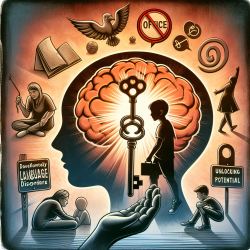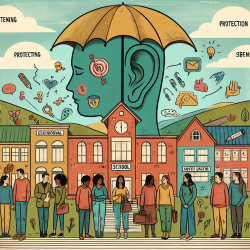In the ever-evolving field of speech-language pathology and special education, professionals continually seek innovative tools and resources to enhance their practice and improve student outcomes. The SRA Photo Library (1997), as reviewed in the Therapy Material and Software Reviews section of the Journal of Speech-Language Pathology and Audiology, offers a comprehensive solution that addresses a wide range of clinical and educational needs. This blog post delves into how practitioners can leverage the SRA Photo Library to bolster their clinical skills, facilitate engaging therapy sessions, and encourage further research into effective practices for treating language disorders.
Comprehensive Content for Diverse Needs
The SRA Photo Library is an extensive collection of photo cards, categorized into three collections that cover a vast array of subjects. From animals and colors to occupations and structures, the library provides a rich visual resource for teaching and reinforcing vocabulary and concepts in both children and adults. The inclusion of pronunciation guides in multiple languages, as well as definitions and context for each photograph, makes this tool exceptionally versatile for diverse populations, including ESL and bilingual classrooms.
Practical Applications in Clinical Settings
One of the critical challenges in speech-language pathology and special education is creating an engaging, interactive learning environment that can accommodate the varied needs of students with language disorders. The SRA Photo Library addresses this challenge head-on with its user-friendly design and comprehensive content. Practitioners can use the photo cards for a multitude of activities, such as:
- Vocabulary development through direct teaching and interactive games.
- Enhancing cognitive-linguistic skills by categorizing, comparing, and describing photos.
- Facilitating social communication and narrative skills by creating stories or discussing the context of the photographs.
- Supporting multilingual learners by utilizing the pronunciation guides and definitions provided in several languages.
Encouraging Critical Thinking and Problem-Solving
The structured yet flexible nature of the SRA Photo Library encourages students to engage in critical thinking and problem-solving. By integrating the photo cards into assessment and intervention plans, clinicians can create personalized and meaningful activities that challenge students to apply their knowledge in various contexts. This approach aligns with evidence-based practices that emphasize the importance of active learning and critical engagement in therapy sessions.
Facilitating Research and Professional Development
The SRA Photo Library is not only a valuable tool for direct clinical application but also serves as a resource for research and professional development. Educators and clinicians can explore the effectiveness of visual aids in language acquisition and cognitive development, contributing to the broader knowledge base in the field. Furthermore, the library's comprehensive content and innovative design provide an excellent opportunity for professional development workshops and training sessions, enabling practitioners to stay abreast of effective strategies and technologies in special education and therapy.
Conclusion
The SRA Photo Library (1997) stands out as an exemplary resource for speech-language pathologists, special education teachers, and other professionals working with individuals with language disorders. Its comprehensive content, versatility, and practical applications make it an invaluable tool for enhancing clinical skills, facilitating engaging therapy sessions, and encouraging further research into effective practices. By integrating resources like the SRA Photo Library into their practice, practitioners can significantly enrich the therapeutic experience and improve outcomes for their students.
For those interested in exploring this resource further and understanding its potential impact on clinical practice, SRA Photo Library (1997) provides a detailed review and insights into its application in educational and therapeutic settings.










